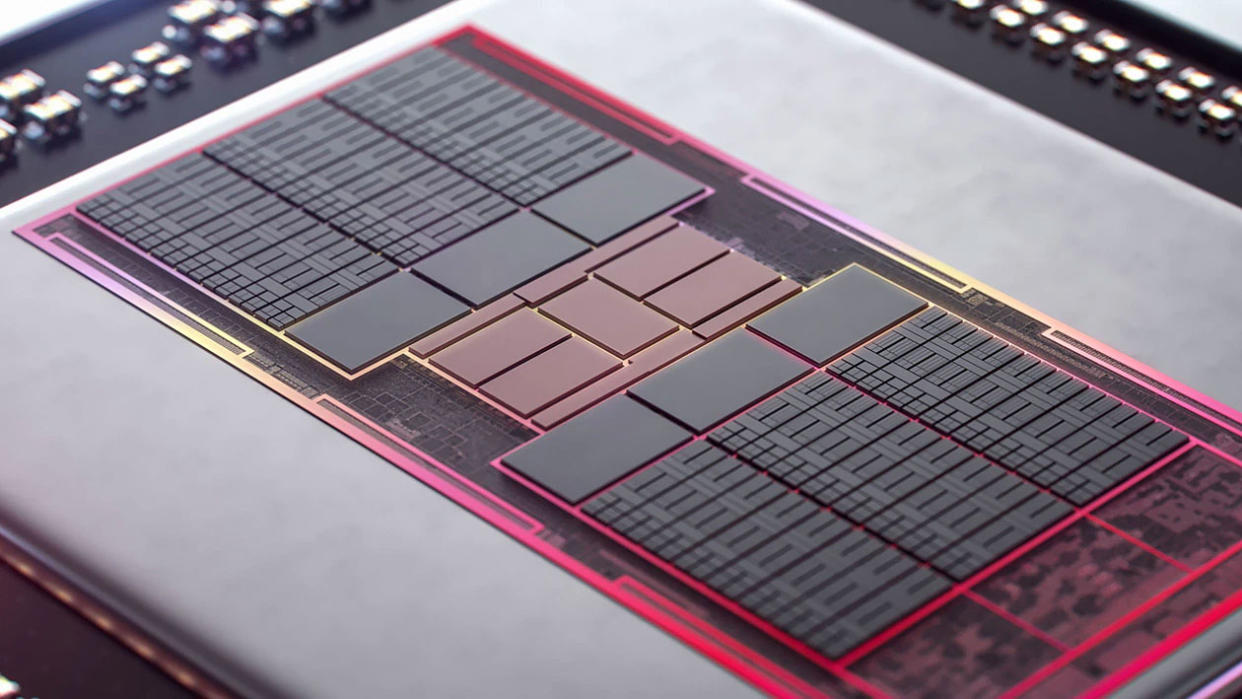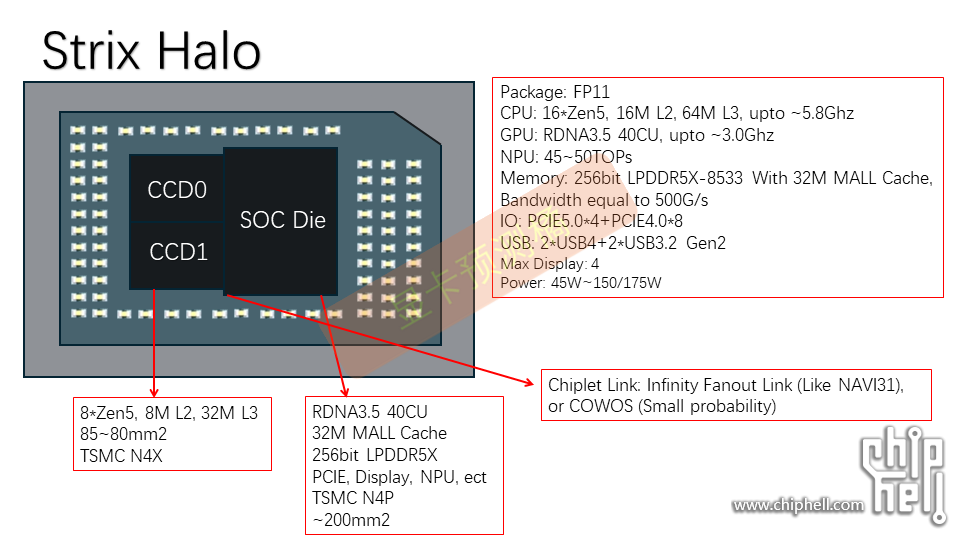Alleged Zen 5 'Strix Halo' Mobile APU has more GPU cores than RX 7600 XT or PS5 — features monster RDNA 3.5 GPU with 40 compute units

A user on the Chiphell forums has apparently spilled the beans on the upcoming "Strix Halo" Zen 5 APU, allegedly leaking detailed specifications and schematics of AMD's new CPU design. The images seemingly confirm that the Strix Halo chips will use a multi-chiplet approach comprised of two Zen 5 CCDs and an SoC die incorporating a massive RDNA 3.5 GPU that features more graphics compute units than either the PS5 or an RX 7600 XT.
Before going any further, it's worth mentioning that these are allegedly leaked details of Strix Halo. The original poster even stated that some of the information is speculative. So take this information with a huge grain of salt. We'll cover the information here, but it's entirely possible and even likely that much of this is bogus.


Strix Halo is shaping up to be the most powerful Accelerated Processing Unit (APU) AMD has ever produced, even when compared with its console counterparts. The high-performance APU will reportedly ship with 16 Zen 5 CPU cores that turbo up to 5.8 GHz along with 16MB L2 cache and a 64MB L3 cache. In addition, the SoC die supposedly sports an additional 32MB "L4 Cache" that the CPU and GPU share.
Strix Halo will also come with an updated XDNA NPU that reportedly has 45 to 50 TOPS of performance, surpassing Microsoft's minimum requirement for AI PCs. The memory interface will consist of either eight 32-bit LPDDR5X memory modules spaced all around the APU (just like on the PS5/Xbox Series X/S) or four 64-bit LPDDR5 DRAM modules in the same configuration. Either way, both configurations will give the Strix Halo APU a 256-bit wide interface. That's wider than what AMD uses in its RX 7700 XT, as well as Nvidia's RTX 4070 Super.
Note that the first image shows memory bandwidth of "500 G/s," which would basically match the RTX 4070 Super. However, the math doesn't add up — remember what we said above about healthy doses of skepticism for this "leak?" A 256-bit LPDDR5x interface running at 8.53 Gbps would yield total bandwidth of 273 GB/s. That's still quite fast for a PC APU, but nowhere near the level of the PS5 and Xbox Series X consoles that use GDDR6 14 Gbps memory on a 256-bit and 320-bit/192-bit interface, respectively. For reference, the PS5 has 448 GB/s of shared bandwidth, while the Series X has 560 GB/s for the GPU and another 336 GB/s for the OS.
Even if the bandwidth isn't quite as high as, um, estimated, all that high-speed LPDDR5X memory will be crucial for feeding the GPU. Strix Halo's GPU is supposedly monstrous, to say the least, and shares more characteristics with AMD's PlayStation 5/Xbox Series X custom-made APU designs than any of its desktop or mobile counterparts. The GPU specs reportedly feature 40 compute units, which equals 2,560 "streaming processor" shader cores on the latest RDNA 3.5 (or RDNA 3+) GPU architecture.
Strix Halo will also feature three separate chiplets: two CCDs on the left and a large SOC die on the right that's larger than the two CCDs combined. The massive SoC die results from all the usual SoC functions, plus the massive RDNA 3.5 GPU housed in the silicon. AMD is expected to use its Infinity Fanout Link tech (currently used on the RX 7000-series) or COWOS to link the three dies.
If these specs are legitimate, Strix Halo could be the fastest APU AMD has ever made outside the PlayStation/Xbox ecosystem — and possibly faster than those current consoles as well. It's quite obvious this new APU design is aimed at fighting AMD's ARM-based competitors, such as Qualcomm and Apple. Apple currently has the fastest ARM-based consumer processor on the market, with a potent GPU as well.
Just like the M1, M2, and M3 series, Strix Halo will be able to fulfill many roles with its combination of 16 Zen 5 cores and a large RDNA 3+ GPU, including gaming and content production. Strix Halo could have the biggest impact on the mid-range gaming laptop market, where its GPU should be sufficient to outperform Nvidia's laptop GPUs like the RTX 4050 and perhaps even the RTX 4060. Manufacturers utilizing Strix Halo will also be able to slim down their laptop chassis much more than Nvidia-powered gaming laptops, since no discrete GPU takes up precious space on the motherboard. At some point, we could even see Strix Halo in a handled gaming PC.
We still don't have information on Strix Halo's debut, but we expect it could arrive after AMD launches the Ryzen 9000-series CPUs later this year. There will obviously be multiple variants of the chip, with fewer CPU and GPU cores enabled, but we'll have to wait for AMD to announce further details and confirm whether any of these supposed specifications are legit.

